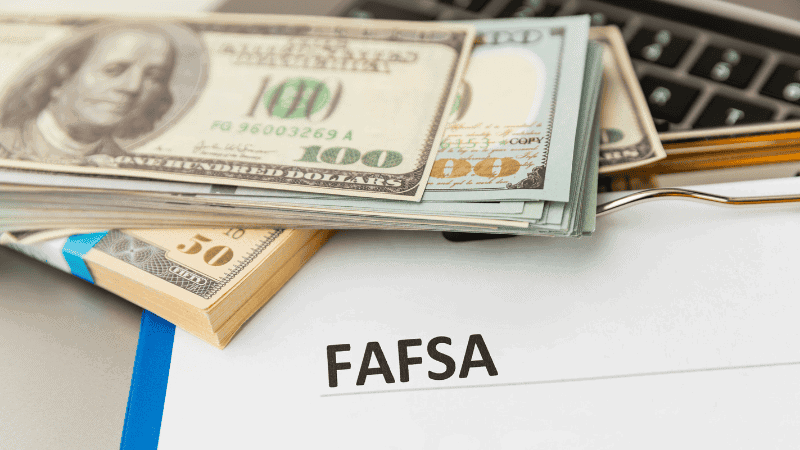The Free Application for Federal Student Aid (FAFSA) has always been a critical step for students securing financial aid for college.
Whether it’s grants, loans, or work-study programs, FAFSA determines how much support students can receive.
However, significant changes are coming to the FAFSA process, starting with the 2025–26 academic year.
These updates are designed to make applying more manageable for families, but they’ll also change how some financial aid is calculated.
Let’s take a closer look at what’s changing and what families should do to prepare.
What is FAFSA, and why does it matter?
The FAFSA is the form that opens the door to financial aid for college.
It’s required for federal aid like Pell Grants, Direct Loans, and work-study jobs, and many states and colleges use it to award their scholarships or grants.
Submitting the FAFSA early is essential because some aid, like state grants, is awarded on a first-come, first-served basis.
Even if you think you might not qualify for much aid, filling it out is still worth it—many schools use the FAFSA to determine eligibility for their own financial aid programs.
What’s changing for the 2025-26 FAFSA?
This isn’t just a minor update—these changes are some of the biggest in FAFSA history. So, what’s different?
A simpler form
One of the most talked-about changes is the new, streamlined FAFSA form.
The number of questions has been slashed from over 100 to just 36.
For many families, this means less time spent filling out the form and fewer chances to make mistakes.
However, simplified questions might make it harder to provide accurate information for families with more complex financial situations, such as self-employed parents or those with unique income streams. These families may need more guidance completing the form.
Changes to family size and multiple students in college
Previously, families with more than one student in college saw their Expected Family Contribution (EFC) divided among the number of students. That’s no longer the case.
Under the new Student Aid Index (SAI), family size and the number of students in college won’t reduce the amount you’re expected to pay.
This is a big deal for families who have relied on this adjustment to lower their costs, and it may mean less aid for families with multiple college-aged kids.
Updated income reporting rules
The FAFSA will now rely more heavily on IRS data, automatically pulling tax information to reduce errors and simplify the process.
While this means less manual work for families, it also highlights the importance of accurate tax returns.
Any mistakes or outdated information could cause delays in financial aid decisions.
Expanded Pell Grant eligibility
The new FAFSA will make it easier for low-income families to qualify for Pell Grants.
Expanded eligibility rules mean more students can access this valuable federal grant, which doesn’t need to be repaid.
Families that previously missed out on Pell Grants due to narrow income thresholds may now qualify.
New deadlines
The FAFSA timeline has shifted, so staying on top of submission deadlines is critical.
Missing the deadline could mean losing out on aid, especially for state and institutional programs that operate on a first-come, first-served basis.
What do these changes mean for families?
The new FAFSA will be easier for many families to complete, and low-income families stand to benefit the most, thanks to simpler forms and expanded Pell Grant eligibility.
However, middle- and higher-income families might face challenges, especially if they’re used to getting aid adjusted for multiple students in college.
Without that adjustment, they may need to explore other ways to offset the cost of tuition.
These changes could affect how much aid your family qualifies for, so staying informed and prepared is critical.
What families should be doing right now
These updates are already in effect, and the 2025-2026 form is available now.
Here are some steps families can take to stay ahead.
- Get your financial info in order: Review your tax returns and other financial documents. The new FAFSA will pull data directly from the IRS, so ensuring everything is accurate and current is essential.
- Work with a college planning expert: If you’re unsure how these changes will affect your family, consulting a college planning specialist is smart. Organizations like College Benefits Research Group (CBRG) can help you understand how the new rules will impact your financial aid eligibility and create a plan tailored to your situation.
- Understand the new aid calculations: Take some time to run the numbers and see how the new SAI formula might impact your aid. If you have multiple kids in college, plan for reduced aid and explore other funding options, like scholarships or private loans.
Additional resources for navigating FAFSA changes
Navigating the FAFSA changes can feel overwhelming, but you don’t have to go it alone.
Many online resources are available to help:
- The official FAFSA website: Visit studentaid.gov for up-to-date information on FAFSA changes, deadlines, and submission guidelines.
- Financial aid calculators: Many online tools can help you estimate your financial aid eligibility under the new rules. These calculators are a great starting point for understanding what to expect.
- Expert help from CBRG: College Benefits Research Group specializes in helping families navigate the financial aid process.
Our team can guide you through the new FAFSA rules and help you maximize your aid.
Whether it’s answering your questions or creating a personalized college funding strategy, we’ve got you covered.
Preparing for the new academic year with FAFSA changes
The FAFSA changes for the 2025–26 academic year are a big deal, and understanding them is essential for families planning to pay for college.
The updates aim to simplify the process and expand access to aid, but they also bring challenges—especially for families with complex financial situations or multiple college-aged kids.
By staying informed, preparing early, and seeking expert advice, you can ensure your family is ready for the new FAFSA process.
To get personalized help and guidance, schedule a consultation with College Benefits Research Group.
Consider joining one of our virtual college planning workshops, where you’ll learn valuable strategies to navigate the FAFSA changes and optimize your financial aid opportunities.
Our workshops provide expert insights and actionable advice to help you make confident decisions about your student’s college funding.


